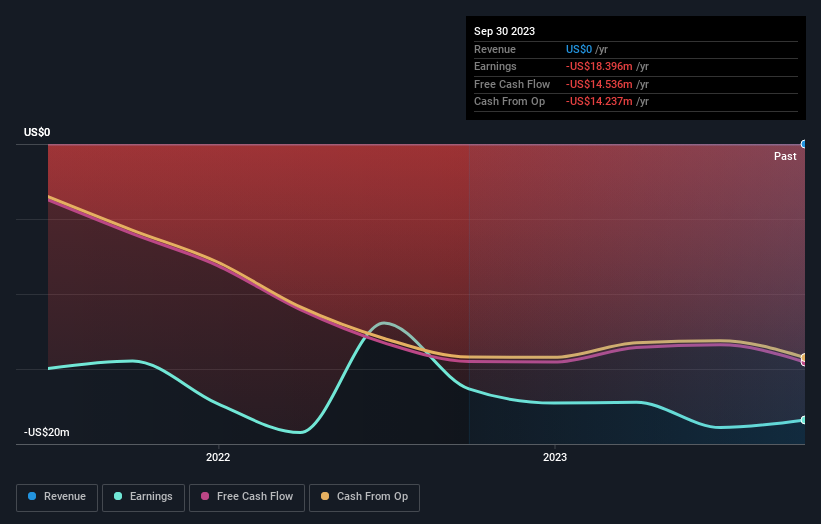Collective Mining Ltd.'s (TSE:CNL) top owners are retail investors with 50% stake, while 37% is held by insiders
Key Insights
The considerable ownership by retail investors in Collective Mining indicates that they collectively have a greater say in management and business strategy
50% of the business is held by the top 15 shareholders
Insider ownership in Collective Mining is 37%
Every investor in Collective Mining Ltd. (TSE:CNL) should be aware of the most powerful shareholder groups. And the group that holds the biggest piece of the pie are retail investors with 50% ownership. Put another way, the group faces the maximum upside potential (or downside risk).
And individual insiders on the other hand have a 37% ownership in the company. Generally speaking, as a company grows, institutions will increase their ownership. Conversely, insiders often decrease their ownership over time.
Let's delve deeper into each type of owner of Collective Mining, beginning with the chart below.
Check out our latest analysis for Collective Mining

What Does The Institutional Ownership Tell Us About Collective Mining?
Many institutions measure their performance against an index that approximates the local market. So they usually pay more attention to companies that are included in major indices.
Collective Mining already has institutions on the share registry. Indeed, they own a respectable stake in the company. This implies the analysts working for those institutions have looked at the stock and they like it. But just like anyone else, they could be wrong. If multiple institutions change their view on a stock at the same time, you could see the share price drop fast. It's therefore worth looking at Collective Mining's earnings history below. Of course, the future is what really matters.

We note that hedge funds don't have a meaningful investment in Collective Mining. Our data suggests that Ari Sussman, who is also the company's Top Key Executive, holds the most number of shares at 18%. When an insider holds a sizeable amount of a company's stock, investors consider it as a positive sign because it suggests that insiders are willing to have their wealth tied up in the future of the company. Meanwhile, the second and third largest shareholders, hold 8.4% and 6.6%, of the shares outstanding, respectively. Additionally, the company's CEO Omar Ossma directly holds 0.8% of the total shares outstanding.
After doing some more digging, we found that the top 15 have the combined ownership of 50% in the company, suggesting that no single shareholder has significant control over the company.
Researching institutional ownership is a good way to gauge and filter a stock's expected performance. The same can be achieved by studying analyst sentiments. As far as we can tell there isn't analyst coverage of the company, so it is probably flying under the radar.
Insider Ownership Of Collective Mining
The definition of company insiders can be subjective and does vary between jurisdictions. Our data reflects individual insiders, capturing board members at the very least. The company management answer to the board and the latter should represent the interests of shareholders. Notably, sometimes top-level managers are on the board themselves.
I generally consider insider ownership to be a good thing. However, on some occasions it makes it more difficult for other shareholders to hold the board accountable for decisions.
It seems insiders own a significant proportion of Collective Mining Ltd.. It has a market capitalization of just CA$254m, and insiders have CA$93m worth of shares in their own names. It is great to see insiders so invested in the business. It might be worth checking if those insiders have been buying recently.
General Public Ownership
The general public, who are usually individual investors, hold a 50% stake in Collective Mining. While this group can't necessarily call the shots, it can certainly have a real influence on how the company is run.
Next Steps:
While it is well worth considering the different groups that own a company, there are other factors that are even more important. Be aware that Collective Mining is showing 2 warning signs in our investment analysis , and 1 of those is potentially serious...
If you would prefer check out another company -- one with potentially superior financials -- then do not miss this free list of interesting companies, backed by strong financial data.
NB: Figures in this article are calculated using data from the last twelve months, which refer to the 12-month period ending on the last date of the month the financial statement is dated. This may not be consistent with full year annual report figures.
Have feedback on this article? Concerned about the content? Get in touch with us directly. Alternatively, email editorial-team (at) simplywallst.com.
This article by Simply Wall St is general in nature. We provide commentary based on historical data and analyst forecasts only using an unbiased methodology and our articles are not intended to be financial advice. It does not constitute a recommendation to buy or sell any stock, and does not take account of your objectives, or your financial situation. We aim to bring you long-term focused analysis driven by fundamental data. Note that our analysis may not factor in the latest price-sensitive company announcements or qualitative material. Simply Wall St has no position in any stocks mentioned.
